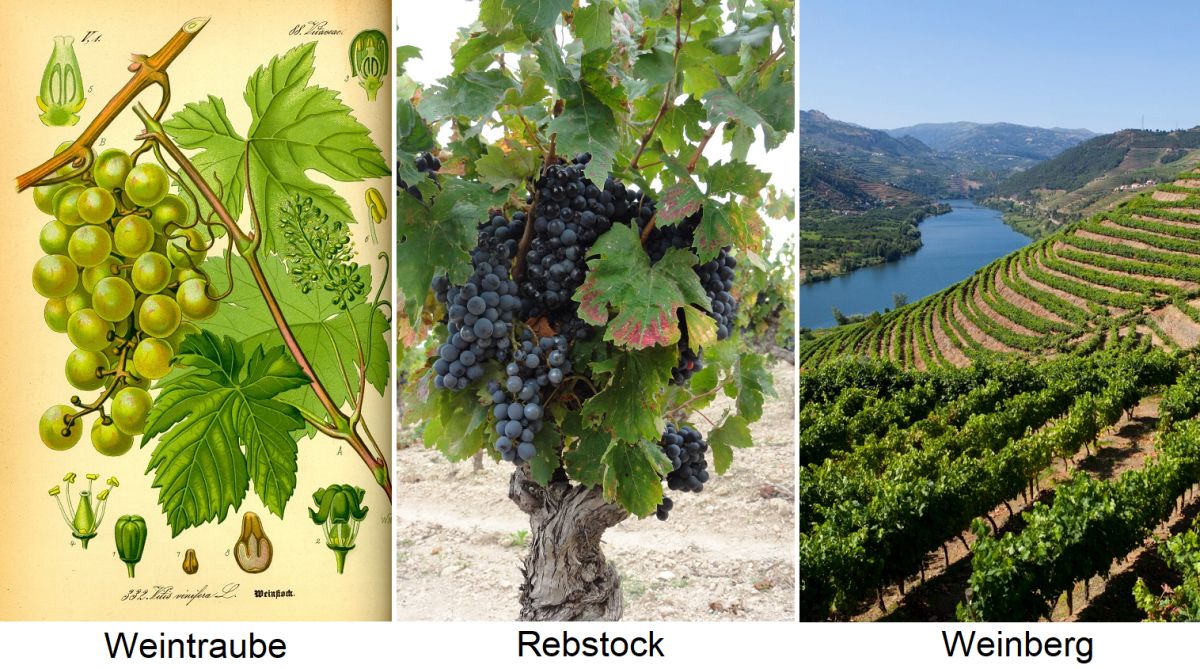Lower part of the vine; see there.
vine
In the taxonomic system, the grapevine is assigned to the subclass Rosidae (rose plants), the order Vitales (vine plants), the family Vitaceae (vine plants) and the genus Vitis, the grapevines (see Vine systematics). It is a climbing plant that originally climbed up trees. A grapevine can grow to enormous proportions and, in extreme cases, can be over 300 years old.
The morphology (appearance) of a vine is divided into three main organs: roots, shoot axis (stem with shoots) and leaves. The entire root system lies underground, most of it at a depth of 20 to 50 centimetres, although this is of course highly dependent on the type of soil. This anchors the vine in the soil and supplies it with everything it needs, such as water and nutrients.

Lower part (root system)
In many countries in the New World, artificial irrigation is common; in the EU, this is subject to authorisation. In the usual form of grafted vines, the root functions are fulfilled by the rootstock. The ideal soil has a good balance between water retention capacity and water drainage, so that the roots are forced to spread far and deep into the soil.
In loose soil, the roots can penetrate up to 15 metres deep. The lateral roots spread mainly in the upper layers and absorb water and nutrients via the thin fibrous roots (root hairs). The dew roots located above the lateral roots (suction root, aerial root, day root, dew willow, dew sucker) spread just below the surface of the soil; they absorb the dew or frost.

Upper part (scion)
The "old wood", i.e. the trunk formed from the scion grafted on during grafting and the cordons (shoots) branching off from it, lies above the soil surface. Water shoots (unwanted side shoots) can form on the trunk (also underground) from adventitious buds. The two-year-old canes...
Voices of our members

For me, Lexicon from wein.plus is the most comprehensive and best source of information about wine currently available.
Egon Mark
Diplom-Sommelier, Weinakademiker und Weinberater, Volders (Österreich)